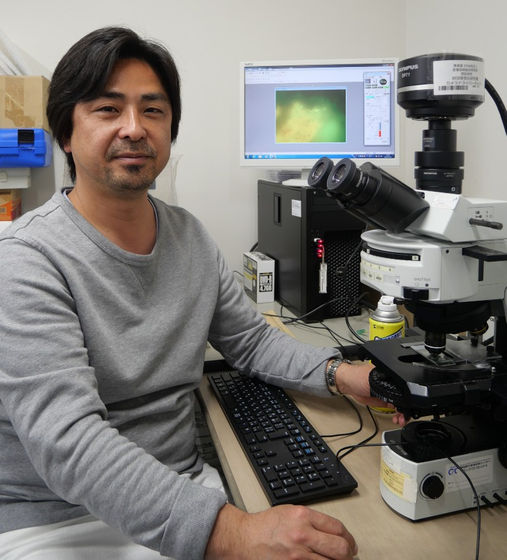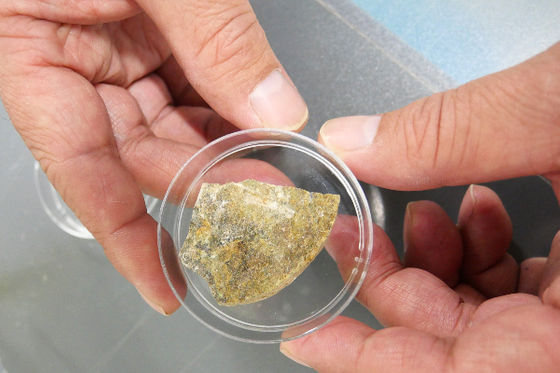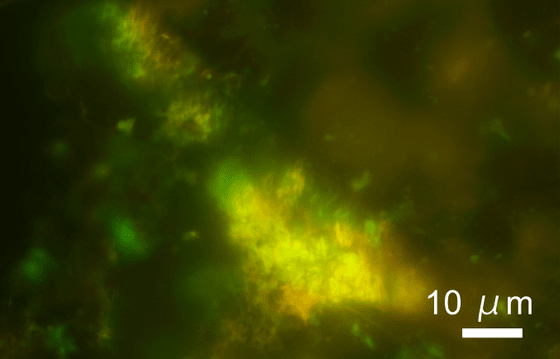It turns out that 10 billion microorganisms are inhabiting per cubic centimeter in rocks on the sea floor, the possibility of life on Mars soaring

Excavations and analyzes led by the University of Tokyo have shown that rocks deep underground beneath the sea floor contain as many as 10 billion microorganisms per cubic centimeter. Rich ecosystems have been identified in places that have been considered to have little life due to low temperatures and few energy sources, and there is increasing hope that Mars, a similar environment, will have life.
Deep microbial proliferation at the basalt interface in 33.5–104 million-year-old oceanic crust | Communications Biology
Microorganisms of 10 billion cells in rock 1cm 3 per of 'common sense overturn the results' submarine groundwater - The University of Tokyo Graduate School of Science, Faculty of Science
https://www.su-tokyo.ac.jp/ja/press/2020/6766/
Bacteria in rock deep under sea inspire new search for life on Mars | The University of Tokyo
https://www.u-tokyo.ac.jp/focus/en/press/z0508_00099.html
The upper part of the ocean crust at the bottom of the sea is mainly made of basalt , which is formed by solidification of magma. In these rocks, small cracks less than 1 mm wide were formed during the process of cooling and hardening, and the rock layers up to about 10 million years after the formation were still hot, so seawater penetrated the cracks. It is speculated that reacting with rock provides enough energy for the microorganisms to survive.
On the other hand, basalt that has cooled more than 10 million years after its formation has been supplied with little energy, and until now it was not thought that there was abundant life. In addition, because the sediment is thickly piled up on the sea floor and it is difficult to investigate, the elucidation of the actual situation has not been advanced.
Therefore, a research group led by Associate Professor Yohei Suzuki of the Department of Earth and Planetary Sciences at the University of Tokyo participated in the Integrated International Deep Sea Drilling Program (IODP) led by Japan and the United States in 2003-2013 , and drilled the South Pacific seabed. Basalt samples were taken from rock formations 33.5 million years ago and 140 million years ago, about 122 meters below the sea floor.

by Caitlin Devor
Since this sample was not excavated near a
Suzuki also sterilized the surface of the sample using artificial seawater washing and instantaneous incineration to prevent contamination by external organisms. Suzuki describes this technique as 'like making broiled sushi.'
Next, Suzuki's research team developed a method for investigating the inside of a sliced rock, inspired by doctors' slices of a patient's body tissue sample and performing biological tissue diagnosis . By solidifying the flakes of rock with a special resin, we succeeded in observing the microorganisms that live in cracks less than 1 mm in width.

by Caitlin Devor
The research team measured the number of microbial cells in the sample and found that there were 10 billion cells per cubic centimeter of rock. This is the same density as in the human intestine. On the other hand, considering that the number of cells in mud deposited on the sea floor is at most about 100 per cubic centimeter, it is clear how many microorganisms inhabit rock.
In the image below, the orange part is a clay mineral elongated in a basalt crack. The green part is the part that stained the DNA of the microorganism.

Furthermore, when we analyzed the like DNA and lipids of microorganisms, microorganisms in rock as an energy source inorganic autotrophs rather, in the same manner like the human organic matter as an energy source heterotrophic organisms it is also I understand.
According to Suzuki about these findings, 'rock cracks seem to be a good environment for life. Clay minerals are miraculous materials, and if there is clay mineral anywhere on the earth, living things will live there 'They pointed out that the rich nutrients of clay minerals in rocks supported ecosystems deep in the ocean floor.
In addition, this discovery has attracted attention not only to the ocean floor but also to Mars. The surface of Mars is known to be made of basalt, and recent observations have shown that ' water is just below the surface of Mars .'
Suzuki said, `` The conditions such as low temperature, moderate salt, rich in iron, neutral to slightly alkaline basalt, etc. are the same between Mars and the deep sea of the earth, '' this discovery was made. Pointed out the similarities between the rocks on the sea floor and the Martian environment.
Suzuki's research team plans to work with NASA's Johnson Space Center to develop a plan to investigate rocks collected from Mars by Mars rover.
Related Posts:







